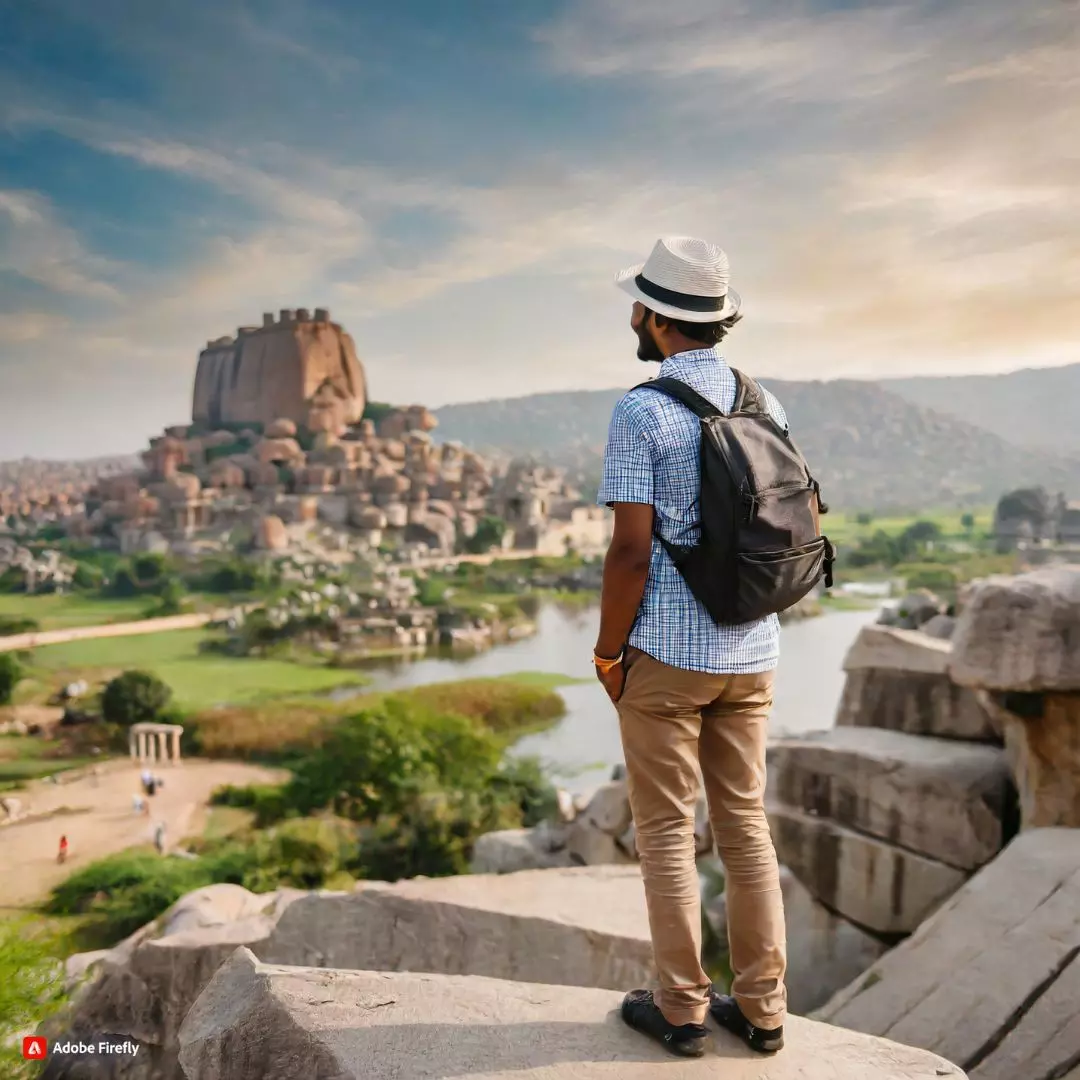Nestled in the picturesque state of Karnataka, India, Hampi stands as a living testament to the opulence and grandeur of the Vijayanagara Empire. This UNESCO World Heritage Site, once the flourishing capital of the empire, echoes the footprints of a bygone era. Stepping into Hampi is like unravelling a rich historical tapestry that depicts the city’s prominence as a cultural and commercial hub during the 14th to 16th centuries.
The remnants of Hampi’s historical significance are embodied in its architectural marvels, such as the iconic Vitthala Temple. Dedicated to Lord Vitthala, an incarnation of Lord Vishnu, this temple boasts intricate carvings, an ornate stone chariot, and musical pillars that resonate with celestial notes when touched. The city’s diverse cultural influences are evident in its Dravidian and Indo-Islamic architectural fusion, reflecting a melting pot of Hindu, Jain, and Islamic cultures.
Spiritual Sanctity:
Beyond its historical allure, Hampi exudes spiritual sanctity, drawing pilgrims and tourists alike. Considered holy by both Hindus and Jains, the city’s spiritual resonance is palpable in its sacred sites. The Virupaksha Bazaar, also known as the Hampi Bazaar, stands as a living testament to the city’s religious significance. This vibrant market, surrounded by temples and shrines, continues to thrive, providing a glimpse into the enduring cultural heritage of Hampi.
Cultural Extravaganza:
Hampi’s cultural significance extends beyond its historical and spiritual dimensions. The city hosts numerous festivals and ceremonies throughout the year, with the Maha Shivaratri Festival, dedicated to Lord Shiva, taking center stage. The cultural extravaganza also includes traditional dance forms like Yakshagana and classical music performances, such as Karnatak music, enriching the cultural legacy of the region.
Preserving the Heritage:
The Group of Monuments at Hampi, spanning over 4,187 hectares, showcases the city’s austere yet grandiose architecture. The site, dominated by the Tungabhadra River, craggy hills, and open plains, houses over 1,600 surviving remains, including forts, temples, shrines, and more. The Krishna Temple complex, Narasimha, Ganesa, Achyutaraya, Pattabhirama, and the Lotus Mahal complexes stand out as exemplary structures, highlighting the city’s sophisticated urban, royal, and sacred systems.
UNESCO Recognition:
Hampi’s outstanding universal value has earned it a rightful place on the UNESCO World Heritage list. The city’s remarkable integration of planned and defended structures with temple architecture and natural surroundings makes it a unique artistic creation. Its exceptional testimony to the vanished Vijayanagara civilization and the destruction at the Battle of Talikota further solidifies its significance under UNESCO criteria.
Challenges and Conservation:
While the majority of monuments remain well-preserved, challenges such as development pressures, encroachments, and changes in land use threaten the property’s integrity. The Hampi World Heritage Area Management Authority (HWHAMA) plays a pivotal role in safeguarding the site, coordinating with various authorities, including the Archaeological Survey of India (ASI) and the government of Karnataka.
Looking Forward:
As Hampi continues to enchant visitors with its historical, spiritual, and cultural allure, the need for effective protection and management becomes paramount. The HWHAMA’s initiatives, including the Integrated Information Management Centre and the Joint Heritage Management Program, mark strides toward preserving this cultural gem.
In conclusion, Hampi beckons as more than just a tourist destination; it’s a journey through time and a celebration of India’s rich cultural heritage. Whether you are drawn by history, spirituality, or cultural festivities, a visit to Hampi promises an immersive experience into a world where the past seamlessly intertwines with the present. Plan your trip today and witness the timeless grandeur of Hampi, a living testament to India’s cultural richness.
Also Read: Study Reveals Plant-Based Diets In China, Japan & India Linked To Lower Alzheimer’s Risk











